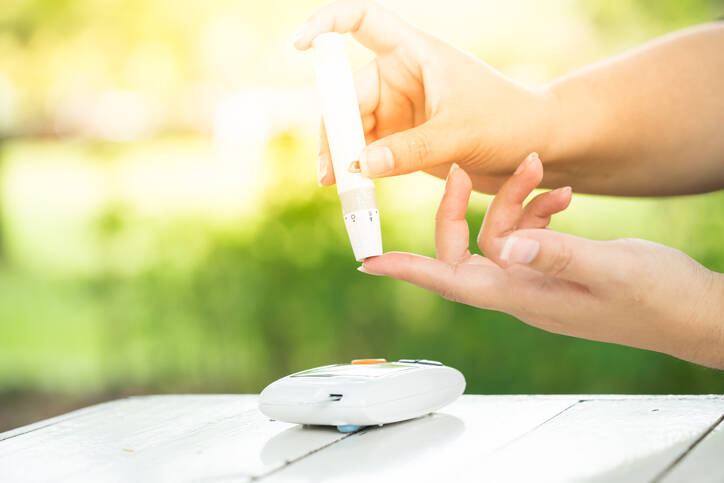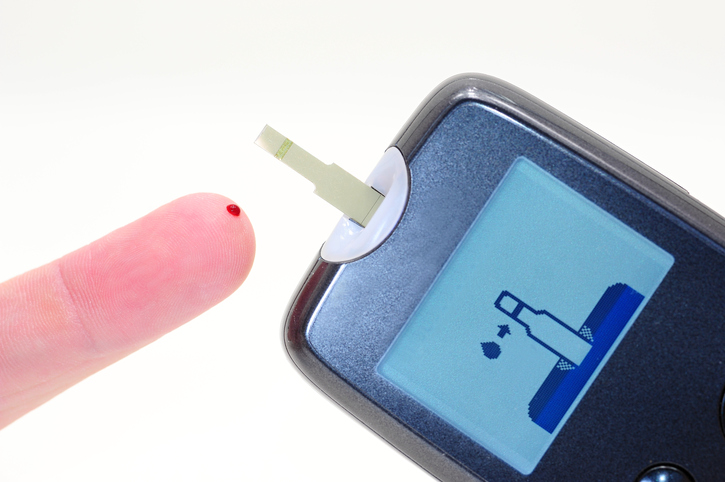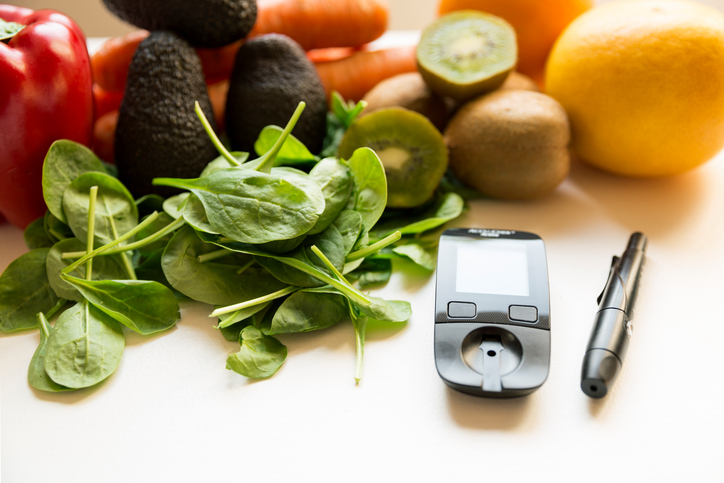- diabetik.sk - portal for diabetics
- encyklopedia.akv.sk - about hypoglycemia
- prolekare.cz - information in pdf format
Hypoglycaemia: How does low blood sugar manifest itself? + Complications

Diabetes is a serious disease and needs to be treated responsibly. However, sometimes it happens that the blood sugar level drops too low and the person has a state of hypoglycaemia. Hypoglycaemic coma is dangerous. However, it is not only the diabetic who has low blood sugar.
Article content
Diabetes mellitus is a disease characterized by a disorder of sugar metabolism. Even today, it still cannot be cured completely. Its treatment is important because it keeps blood sugar levels within normal limits, thereby preventing the early onset and development of various complications.
Insulin is used in the treatment of diabetes, especially type I. Type I diabetes mellitus is characterised by a complete lack of insulin, which must then be supplied to the body from outside. Even non-diabetics are familiar with injecting insulin with an insulin pen. Another method is, for example, with an insulin syringe or insulin pump.
Type II diabetes mellitus is not always insulin-dependent and is treated with pills. In mild forms, even with diet. However, the more difficult ones require a combination of drugs and insulin. The drugs for this type are called oral antidiabetic drugs, also abbreviated PAD (or OAD, oral antidiabetic drugs).
Interesting information is presented in the article.
For a diabetic, the blood sugar value, or glycaemia, is very important. Glycaemia is the technical term for the value of sugar in the blood, which is the energy source for the cells. Therefore, for the cells to be able to take it up from the blood, insulin is needed. Not all organs need sugar exclusively for their functioning.
For the brain and brain cells, sugar is the only form of energy.
The brain needs sugar as well as oxygen. Without glucose and insulin, problems in the form of neurological symptoms occur. In addition to this, other general symptoms also occur. Subsequently, sugar is used as a store in the body in the form of glycogen, fats and proteins.
Low sugar levels can occur in certain circumstances in a non-diabetic - a person who is not being treated for diabetes.
What is hypoglycaemia?
Hypoglycemia is a low blood sugar level. It is determined by a blood draw and laboratory testing. A momentary and accurate blood sugar value is determined. Of course, it takes a considerable amount of time before a person comes to the doctor and the blood sample is transported to the lab and tested.
Hypoglycemia is a blood sugar value below:
2.8 mmol/l in adulthood
2.2 mmol/l in older children
3.3 mmol/l in infancy
1.7 mmol/l in newborns
There is also a quicker way of measuring. For example, in the home or in a doctor's or ambulance service clinic, this is a reference glucose reading. And this is done using a glucometer or blood sugar meter.
This method is quick and likewise has the advantage of being relatively low cost. Simplicity is important, especially in emergency situations. And hypoglycaemia in particular has an acute or sudden course. It occurs mainly in diabetics who are treated with insulin.
Read also:
Blood sugar levels, what are its values, hyperglycaemia and hypoglycaemia
Hyperglycaemia - high blood sugar
Diabetes and its complications
Causes and distribution of hypoglycaemia
Low blood sugar can have other causes. It is not exclusively a problem with diabetes. Overdose of drugs, alcohol, hormonal diseases, organ failure such as liver, kidney or heart can be behind the occurrence of hypoglycemia.
It occurs in up to 90% of type I DM cases and in type II DM it is 0.2-20 cases per 1000 per year.
Reduced blood sugar levels are also seen with stress or prolonged mental stress. It can also be seen with physical exertion, with fasting and even with fasting if it lasts too long.
Hypoglycaemia is classified according to its cause, an example of which is given in the table below
| Name | Description |
| Postabsorptive hypoglycemia | Fasting |
| after medication | Insulin sulfonylureas, PAD salicylates quinine beta blockers alcohol |
| artificially induced hypoglycaemia | insulin |
| for hormonal deficiency | adrenal deficiency growth hormone deficiency glucagon deficiency hypothyroidism |
| in organ failure | heart liver kidney in sepsis |
| cancer | Endogenous hyperinsulinism as a non-tuberculous tumor or insulinomas, an insulin-producing tumor |
| autoimmune diseases | insulin antibodies insulin receptor antibodies |
| inborn errors of metabolism in childhood | ketotic hypoglycemia transient neonatal hypoglycemia children of diabetic mothers |
| postpartum hypoglycaemia | also referred to as reactive |
| alimentary hypoglycaemia | after gastric surgery, gastrectomy or pyloroplasty |
| idiopathic reactive | reduction diet |
| deficiency of enzymes of carbohydrate metabolism | galactosemia congenital fructose intolerance |
| pseudohypoglycaemia | asymptomatic |
Hypoglycaemia can also be asymptomatic or symptomatic. Asymptomatic is not outwardly apparent. Subsequently, it can be divided into mild and severe - severe hypoglycaemia. In mild, the individual is able to help himself. In severe, he requires help from another as he can no longer help himself.
In diabetics who inject insulin, hypoglycaemia occurs for a variety of reasons. Examples include over-dosing on insulin. This can be the result of incorrectly prescribed treatment, but also as a fault of the person injecting the insulin. In some cases, insulin has been misused to attempt murder or suicide.
The pathophysiology of hypoglycemia can also be described as a disparity between glucose influx and glucose output.
If the dose is adequate, it may be due to reduced food intake after insulin injection. One injects insulin and forgets to eat or eats too late. But also due to excessive physical exertion and mental stress. Drug interaction is a risk in a diabetic. Similarly, alcohol is a risk, which diabetics should not drink at all.
Why hypoglycaemia occurs is a topic for a long time. It is also a very complex issue. Early recognition of symptoms and subsequent first aid is important. Treatment, of course, again depends on the primary disease or triggering cause.
Hypoglycaemia without diabetes
Low sugar levels can occur even in a healthy person, i.e. an individual who is not being treated for diabetes - a non-diabetic. The cause is specific situations where sugar and its supply drop suddenly.
You know, you're on your feet all day and you don't have time to eat.
You feel tired, weak, irritable, nervous.
The organism is exhausted by increased physical or mental stress. Therefore, even in these cases, it is necessary to think about food and drink.
How does the lack of sugar in the blood manifest itself?
Hypoglycemia can manifest itself in different forms and strengths. It depends on several factors. General symptoms occur, which are the result of activation of the autonomic nervous system, its sympathetic and parasympathetic parts. Subsequently, neurological and psychiatric difficulties are associated.
The table shows the distribution of symptoms of hypoglycaemia
| Group of symptoms | Symptoms |
| Adrenergic | Increased sweating |
| sticky and cold sweat |
| Pallor | |
| shivering and trembling of the body | |
| fear | |
| palpitations, or the sensation of a pounding heart | |
| tachycardia | |
| a feeling of nausea or vomiting | |
| Neuroglycopenic | which are divided into: |
| Neurological | Headache |
| decrease in concentration | |
| visual impairment, double vision | |
| coordination disorder | |
| speech impairment | |
impaired consciousness
| |
| spasms of the body | |
| changes in facial expressions | |
| paresis or plegia (partial and complete paralysis) | |
| hunger | |
| Psychiatric | Disorientation |
| slowed thinking, speech, bradypsychism | |
| behavioural changes, aggressiveness | |
| change of character | |
| moodiness, such as depression or euphoria | |
| apathy | |
| restlessness - psychomotor manifestations | |
| thinking disorder | |
| hallucinations or delusions |
Hypoglycaemia is also defined as the presence of Whipple's triad:
- low plasma glucose concentration
- a cutoff value of 2.5-3.3 mmol/l
- below 2.8 mmol/l in a non-diabetic
- in a diabetic below 3.9 mmol/l
- clinical manifestations of low glucose levels
- adjustment and improvement of health status after glucose administration
Hypoglycaemic coma
Can occur as low as 3.3 mmol/l, especially in people treated for diabetes. As they are used to higher blood sugar levels for a long time, such a reduction in glycaemia is a problem. It is more common in type I diabetes mellitus. It accounts for approximately 2% of deaths in people treated with insulin.
In most cases, it arises as a result of excessive or double doses of insulin. And especially when a person forgets to eat or takes food late after taking insulin. Increased doses of oral antidiabetic drugs or diabetes pills are also problematic. Excessive physical stress on a person with diabetes is also behind its occurrence.

Symptoms in hypoglycaemic coma can occur without any warning signals and activation of the autonomic nervous system. In the case of unconsciousness, it is difficult to help the person. As it is not advisable to put honey, sugar or sweet water in the mouth.
Foreign contents in the mouth could cause airway obstruction or aspiration and subsequent pneumonia. Complete airway obstruction would cause difficulty or even cessation of breathing, death. Similarly, if the person is no longer cooperative and does not comply with commands but is not yet unconscious.
Of course, coma can also occur after a prolonged and untreated milder form of hypoglycemia.
Early detection of hypoglycaemia is important. A person who is treated with insulin should have a working glucose meter. With a glucose meter, we can quickly measure the glucose value. It is an advantage if he has a glucagon injection at home to administer in case of unconsciousness.
In case of unconsciousness, we check for breathing and call the emergency services.
How to recognise hypoglycaemia in a child
In a newborn, hypoglycaemia can be the result of maternal diabetes, if the newborn is hypotrophic or hypertrophic, after a premature or stressful birth, and for example, because of a placental disorder. Naturally, in a newborn, other problems should be noted.
Symptoms of low blood sugar in the newborn:
- Hypotonia or reduced muscle tension
- Apathy
- sleepiness
- squeaky crying
- impaired temperature regulation
- body tremors
- weak drinking
- muscle cramps
- vomiting
- pale skin to cyanosis (blue discoloration of the skin)
- rapid pulse and breathing
- cessation of breathing
- to death
In children older than 1 year, symptoms are more specific:
- hunger
- pallor
- sweating
- shivering
- tachycardia
- headache
- visual disturbances
- convulsions
- unconsciousness
If blood sugar lowering is prolonged and asymptomatic, it causes permanent damage to the brain and impaired brain function, resulting in psychomotor retardation, cognitive impairment and secondary epilepsy, for example. Frequent recurrence of episodes of hypoglycaemia is also a risk.
Caution! Hypoglycaemia can be mistaken for
Yes, that's right, hypoglycaemia is often confused with other illnesses. Especially when we see a stranger on the street who is obviously drunk, we think he's heavily intoxicated. You can tell he's drunk, but it's not always the case.
This obviously drunk person may be hypoglycaemic, especially if he hasn't been past the pub for a long time. This condition can even occur in the pub itself. To make matters worse, behind the expression of obvious drunkenness may be a stroke. Indeed, diagnosis on the street and without talking to the person is not easy and smooth.
Another example is a situation of exhaustion and sophistication, but also anxiety or depression or other psychiatric disorders. Spasms of the muscles, and therefore of the whole body, can lead to a false conclusion of the diagnosis of epilepsy. And similarly, one could go on and on. Therefore, the detection of the cause and the correct treatment are important.
What are the risks of hypoglycaemia?
Symptoms of reduced blood sugar levels are quick to appear and can be easily managed. Especially if there are warning signs at the beginning. These can be well recognised by the sufferer and the condition of mild hypoglycaemia can be managed on its own.
The most serious condition is convulsions of the body with impaired consciousness and unconsciousness. Unconsciousness is a condition in which the body is unable to respond to external and internal stimuli.
The risk is reflux of food and digestive juices from the stomach and oesophagus. Gastric contents leak into the respiratory system. Aggressive and acidic vomit causes complicated aspiration pneumonia or pneumonia. Aspiration of a foreign body with subsequent airway obstruction is also serious. Hypoglycaemic states in young children, in infancy, are a cause of mental retardation or other psychiatric disorders, but also, for example, secondary epilepsy.
First aid for hypoglycaemia
First aid depends on the current state of the person with hypoglycaemia, especially whether the person is conscious and cooperative or has already developed a disturbance of consciousness. Disturbances of consciousness can be quantitative and qualitative.
Quantitative ones are somnolence, sopor and coma. Qualitative ones are characterized by a change in the psyche. Basically, the important thing is that the person is not cooperating and it is impossible for him to take sugar in any form through the mouth. In the unconscious state, this is completely out of the question and impossible because of the risk of serious complications.
The table shows first aid for hypoglycaemia
| Action | Description |
| Consciousness maintained | |
| Administration of sugar by mouth | to raise the blood glucose level |
| 10-20 g of sugar | |
| which is approximately 3-4 sugar cubes or 200 ml of juice | |
| honey, sweet drink, concentrated syrup | |
| sugar dissolved in lukewarm water | |
| improvement of the condition and disappearance of difficulties | |
| Disturbance of consciousness to unconsciousness | |
| Administration of sugar outside the digestive tract | parenteral, administration outside the mouth |
| Injection of glucagon into muscle | |
| If the diabetic has an insulin pump, it must be switched off | |
| intravenous administration of concentrated glucose | |
| this procedure is only performed by a healthcare professional | |
| improvement of the condition and disappearance of the disorder | |
| Providing first aid for unconsciousness | |
checking consciousness and breathing
| |
| Professional assistance includes | |
| providing access to a vein | |
| administration of concentrated glucose - 40% glucose 20-60 ml | |
| attention to administration outside the vein = complications | |
| insulin pump off - recurrence of hypoglycaemia | |
| if intravenous access is not possible, glucagon injection | |
| in hypoglycaemia the person wakes up within 5-10 minutes | |
| can remain in the home environment but in the presence of an adult | |
| must eat | |
| repeated checking of health status | |
| If problems persist despite treatment -> need to be seen in a healthcare facility | |
It is important to note that any disturbance of consciousness and coma in a diabetic should be considered hypoglycemia. Glucose administration in time of distress is important. Moreover, this will avoid complications of brain damage.
In the first place, it is both a diagnostic and therapeutic procedure. In hyperglycaemia, a single dose of 20-60 mg of glucose does not create a problem and does not significantly raise the glycaemia, does not worsen the condition. The person does not wake up, which excludes hypoglycaemia. Subsequently, it is necessary to search for the cause of unconsciousness.
Prevention is also important
Prevention is important in diabetes. Of course, long-term and sufficient treatment is also important. Preventing difficulties and complications involves adjusting lifestyle, regimen and eating habits. In the case of food, information on the glycaemic index and restrictions on certain foods and drinks are important.
Interesting information.

What preventive measures to follow in diabetes:
- eating food with a low glycaemic index
- smaller portions and not overeating
- eating more than once during the day, 5-6 times
- a second dinner, especially after insulin treatment
- the interval between meals should be 2-3 hours
- a rational and balanced diet, not monotonous
- substitution of refined sugar such as stevia
- sufficient vitamins and minerals, especially zinc, magnesium
- limiting the intake of simple sugars, sweetened and energy drinks
- drinking regime
- prohibition of alcohol
- caffeinated beverages can promote glycaemia reduction, both coffee and tea
- plenty of physical activity
- plenty of rest and relaxation
About hypoglycemia in the video
Interesting resources










